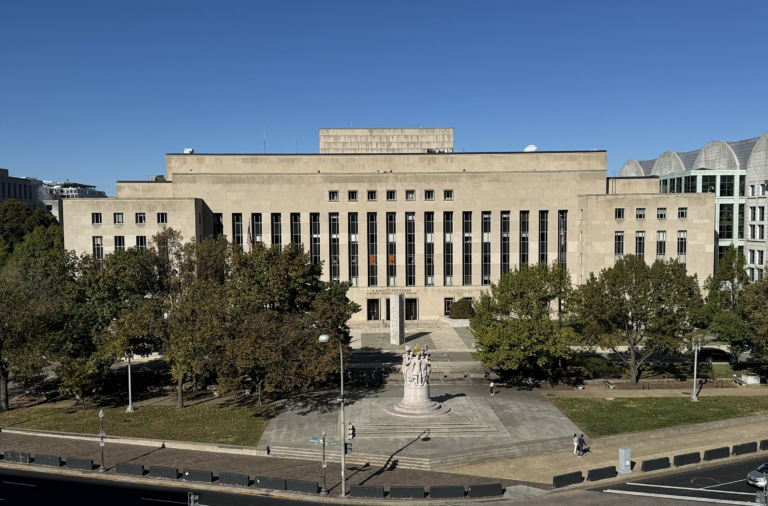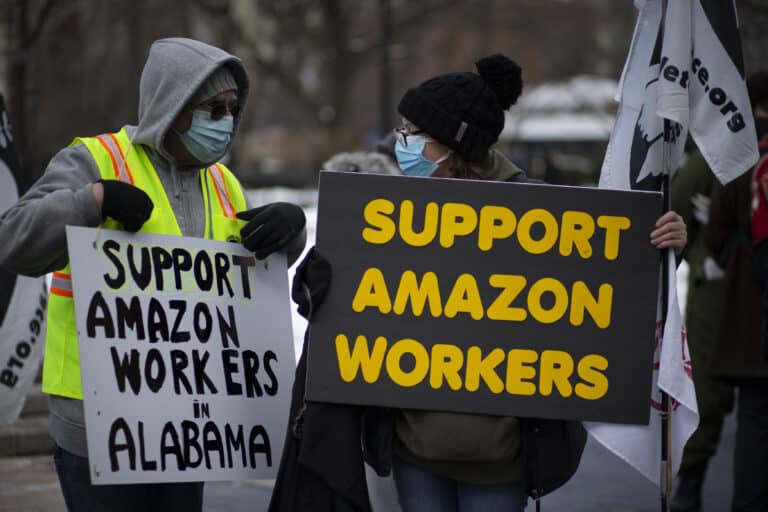Gali Racabi is an S.J.D. candidate at Harvard Law School and a fellow at the Harvard Labor and Worklife Program.
On December 9, the European Commission issued a package of proposed regulations of platform work. This legislative initiative came after a long period of lobbying, consultation, and research by business groups, unions, and academics on the problems emerging from the entry of platforms into European Union labor markets.
From a U.S. perspective, the proposed regulations are astounding in some respects but disappointing in others. The astounding part is its breadth. The U.S. debates on the regulations of platform workplaces have focused, nearly exclusively, on the question of classification. Namely, are Uber, Grubhub, Fiverr, and Amazon MTurk workers misclassified employees, independent contractors, or something in between?
The E.U. directive, however, includes in addition to the classification issue the regulation of algorithmic management (Chapter III); new roles and rights for unions in a tech-decentralized workplace (e.g., Articles 9, 14); transparency, consultations, and appeal rights for workers and their representatives of algorithmic decision-making (Articles 6–8); a workers’ right to communicate with other workers and workers’ representatives through the technological infrastructure of the platform itself (Article 15); and workers’ protected right to accessing judicial venues and the assurances that those venues can subpoena all the relevant data to sort through the various disputes the directive might bring (Articles 16–18). Finally, the directive is topped off with a robust enforcement mechanism to govern this scheme (Article 19). Some of those new workplace rights apply to platform workers regardless of whether they are defined as independent contractors or as employees (Article 10). Self-employed independent contractors might also gain the proposed exclusion from antitrust liability for their unions’ collective bargaining agreements. The U.S. regulatory debates on platform work are far (far) behind those new rights and exemptions.
The proposed directive addresses the concern that simply placing platform workers under the current regime of workplace protections via correct classification is simply not enough. Platform employers enjoy new forms of power to be dealt with; platform workers, even as employees, are exposed to new kinds of risks and domination to be countered.
To American eyes, the disappointing part might be the classification issue (Chapter II). The directive establishes what reads as a two-step scheme for misclassified platform workers to actualize their status as employees. First, workers (or their regulators) must show that the platform “controls” their work. They can establish such control by demonstrating that the platform’s conduct checks at least two of the following five boxes (simplified from legalese): The platform a) controls renumeration; b) requires following certain appearance or conduct rules; c) supervises the course and the quality or results of one’s work; d) effectively restricts the freedom to organize one’s work (e.g., by hiring replacements or by subcontracting); and e) restricts the possibility to build a client base.
Then, when control is established, the burden of proving an employee is in fact an independent contractor shifts to the platforms and is carried out via a factual analysis. Both the first and the second steps of the classification route are murky as to substance and procedure, which are left for E.U. states and judicial venues to develop and actualize, and for platform employers to exploit and leverage.
From a global perspective the directive is a one-of-a-kind example of regulating platform work. But from an E.U. labor perspective, the directive is a promising development, though far from sufficient. Some advocates are concerned that by defining a covered platform as an entity that “organizes” the work performed by individuals, the directive might leave crowd-work platforms such as Amazon Mechanical Turk or Fiverr outside of its scope. Such advocates might draw examples for broader coverage language from the various states’ Marketplace Contractor laws passed in the U.S. in the past decade usually defining platforms as any legal entity facilitating the provision of services through a digital website or app.
Other union federations and commentators note that the platform economy is perhaps special but definitely not unique. Algorithmic management, vague classification standards, difficulties of forming collective actions, and a fissured work environment can be found well outside of the platform economy. Those advocates call for expanding the algorithmic management and classification scheme of the directive to a greater number of sectors and workplaces.
And yet other experts are skeptical that the algorithmic management provisions are sufficient for workers to level the playing field with platforms. Even if workers are equipped with individual and collective rights for information about algorithmic decision processes and enjoy the right to review and even appeal such surveillance and decision making mechanisms, worker-side advocates might lack the expertise (or the capacity to develop the expertise) necessary to build real countervailing power to algorithmic bosses. Such advocates might call for broadening the directive’s prohibitions on data collection, leveling the playing field by delimiting the potential data differential between platforms and workers.
Still, the upshot of the directive for the U.S. labor movement is with the forest, not with the particular trees. The directive stands as a mirror image of the above-mentioned Marketplace Contractor laws, purporting to govern all work performed via online platforms — effectively excluding platform workers from any and all work law protections available on the state level.
The Marketplace Contractor laws are Uber, Lyft, and Amazon & Co.’s answer to “what is the endgame for the platforms’ regulatory struggles?” The E.U. directive poses the same question for the U.S. labor movement and its allies.










Daily News & Commentary
Start your day with our roundup of the latest labor developments. See all
July 9
In Today’s News and Commentary, the Supreme Court green-lights mass firings of federal workers, the Agricultural Secretary suggests Medicaid recipients can replace deported farm workers, and DHS ends Temporary Protected Status for Hondurans and Nicaraguans. In an 8-1 emergency docket decision released yesterday afternoon, the Supreme Court lifted an injunction by U.S. District Judge Susan […]
July 8
In today’s news and commentary, Apple wins at the Fifth Circuit against the NLRB, Florida enacts a noncompete-friendly law, and complications with the No Tax on Tips in the Big Beautiful Bill. Apple won an appeal overturning a National Labor Relations Board (NLRB) decision that the company violated labor law by coercively questioning an employee […]
July 7
LA economy deals with fallout from ICE raids; a new appeal challenges the NCAA antitrust settlement; and the EPA places dissenting employees on leave.
July 6
Municipal workers in Philadelphia continue to strike; Zohran Mamdani collects union endorsements; UFCW grocery workers in California and Colorado reach tentative agreements.
July 4
The DOL scraps a Biden-era proposed rule to end subminimum wages for disabled workers; millions will lose access to Medicaid and SNAP due to new proof of work requirements; and states step up in the noncompete policy space.
July 3
California compromises with unions on housing; 11th Circuit rules against transgender teacher; Harvard removes hundreds from grad student union.